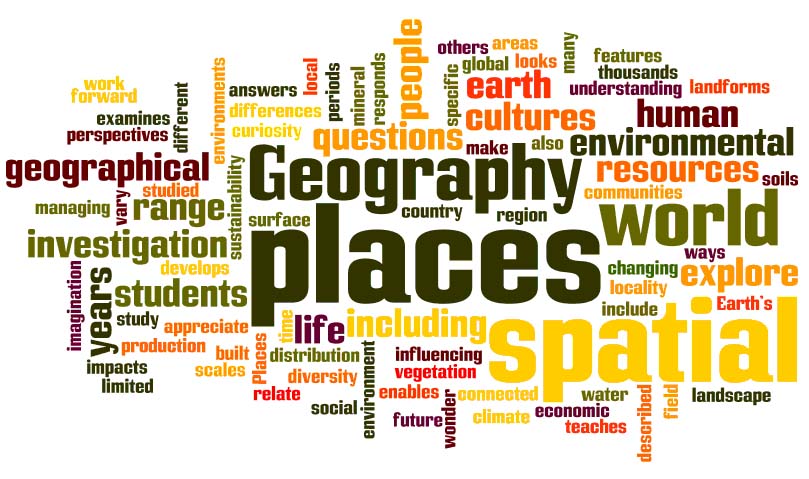Map Reading 101
Description:Using the scale from the map key, students will find the approximate air distance between cities on different maps. This skill will enable them to find any distance on a map or globe.
Grade level(s): Middle Standards: OAS, GFL Produced By: Susan Smith
Using Absolute Location to Improve Your Mental Mapping
Description: Students will understand how latitude and longitude can assist them in finding specific places. They will be able to apply knowledge of location when organizing information about regions and the people who live in them. They will determine what natural resources are available for the people who live in the regions around the rivers, deserts, seas, mountains, and peninsulas being studied.
Grade level(s): Middle Standards: OAS, GFL Produced By: Susan Smith
Absolute Location: Knowing Exactly Where You Are!
Description: Using longitude and latitude, students will find specific locations on maps and globes. Students will be able to use absolute location to find any specific place on any maps and globes (they include a grid system). When given a list of cities or geographically important locations in North and South America, students will be able to apply knowledge of absolute location to pinpoint their locations.
Grade level(s): Middle Standards: OAS, GFL Produced By: Susan Smith
Content and Literacy Connections: Analytical Writing for Geography
Expert Groups
World's Most Extreme: Human-Geo by Country
Mix-N-Match: Geography Essentials for the Common Core
Description: The purpose of this activity is to provide students with a sense of positive interdependence, individual accountability, face-to-face interaction, and whole class participation. This is a review activity where half the class has one part of a pair of cards and the other half of the class has the matching card. The students must change positions to find their match. They can review content and have fun at the same time.
Grade level(s): Middle Standards: OAS, GFL Produced By: Ann Kennedy
The Nitty Gritty City: Becoming an Urban Geo-Detective
Description: This is a collection of lesson plans about geo-skills from the OKAGE 2012 Summer Institute.
Grade level(s): Middle School, High School
Standards: GFL
Produced By: OKAGE
Take Your Peck
Description: Physical characteristics associated with ethnic background and cultures develop over time through a process known as natural selection. In this lesson students will explore this process through an activity that simulates the natural selection process in birds. Students will later analyze the physical characteristics of people from various countries by exploring photos from the “Photo of the Day” project from National Geographic.
Grade level(s): Middle Standards: PASS, GFL Produced By: Tiffany Neill
Feeding Frenzy: A Study of Population Dynamics
Description: Students will examine and explore the factors that impact population dynamics including limiting factors such as food, water, and shelter. Students will also examine the role engineers have in addressing limiting factors that impact carrying capacities within a population.
Grade level(s): Middle Standards: PASS, GFL Produced By: Tiffany Neill
Cultural Caravan
Description: Students may encounter differences in cultures through the course of their lives, but they may not fully recognize how cultures develop. Some cultures share characteristics while some aspects about a culture are distinctly different. Through this lesson students will explore the processes that influence cultural characteristics. Students will also have an opportunity to explore and present cultures connected to their own families and backgrounds.
Grade level(s): Middle Standards: PASS, GFL Produced By: Tiffany Neill
7th Grade World Geography CRT Review
What Can We Learn From Population Pyramids?
Description: In this lesson, students will learn to analyze a population pyramid - a unique and interesting type of graph which shows the age and gender distribution in a given nation, state, or city
Grade level(s): Middle Standards: PASS, GFL Produced By: Janet Hall
I Am A Country - Where Is My Continent?
Description: The purpose of this lesson is to assist students with their mental mapping. In this lesson students must place countries with the continents to which they belong.
Grade level(s): Middle Standards: PASS, GFL Produced By: Helen Chaney-Hackney
If You Give a Mouse a Cookie: Using Graphic Organizers to Teach Cause-Effect Relationships
Description: Helping students understand the complexities of cause-effect relationships in contemporary world geography is best accomplished through the modeling and creation of graphic organizers which reflect such relationships in easily understood, visual ways. Using a scaffolding approach to introduce and reinforce such geographic concepts, such as “human- environment interaction,” (HEI) is an effective learning experience that can be applied to any regional study of the western or eastern hemispheres. The on-going practice in interpreting teacher-created and developing student-created visual graphic organizers, as well as kinesthetically manipulating the basic components of HEI relationships into a “desktop” graphic organizer, reinforces students’ abilities to identify the “causes” versus “effects” of geographic conditions.
Grade level(s): Middle Standards: PASS, GFL Produced By: Pam Merrill





















